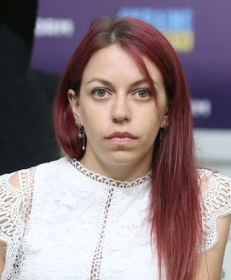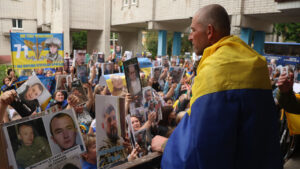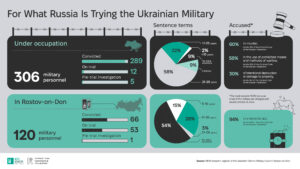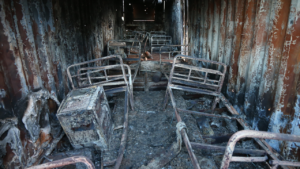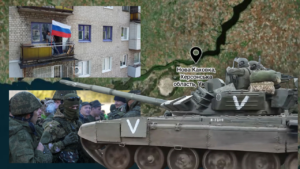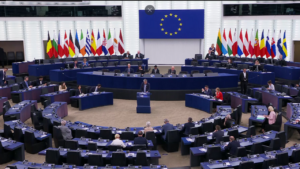Alleged Murderers of Azov Brigade Soldiers in Olenivka Face Charges: Who They are and What the Investigation Reveals
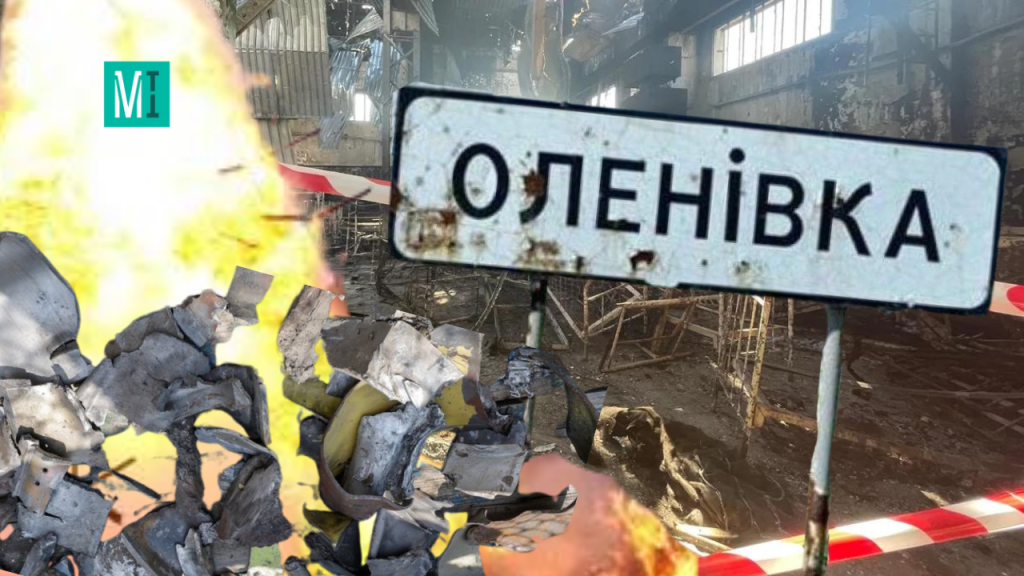
July 28, 2024 is the second anniversary of the mass murder of Ukrainian soldiers of the Azov Brigade held in captivity in Olenivka. Previously the MIHR established the chronology of this crime almost minute by minute. Now we are talking about the progress made in the investigation and the persons charged by the Prosecutor’s Office with the murder.
July 2022. Several thousand defenders of Mariupol are held in captivity in a place that the whole world will soon be talking about. Volnovakha Penal Colony No. 120, known as Olenivka, has become a place of pain and death for Ukrainian soldiers. It was here that captured military and civilian hostages had been brought since March 2022. It was here that, contrary to the Geneva Conventions, many of them were interrogated using torture. The tragedy in Olenivka showed that Russia could deliberately and without reservations execute unarmed people taken into captivity.
Late in the evening in July, several explosions sounded in a separate building situated in the industrial zone in Olenivka, where Russians kept 193 Azov Brigade soldiers. As a result, more than fifty fighters died, and more than a hundred were injured. Not a single representative of the colony administration was hurt.
Initially, there was little information about the explosions – it was mainly circulated by Russian mass media and propaganda Telegram channels. The occupation authorities did not officially confirm anything. Neither international nor Ukrainian forensic experts were allowed to the crime scene. The International Committee of the Red Cross and a special mission set up on August 3, 2022, to establish the facts of shelling the pre-trial detention center in Olenivka were also refused access.
In the end, Russians claimed that Ukraine had used the American High Mobility Artillery Rocket System (HIMARS) to “kill the defenders of Mariupol, who in captivity began to give testimonies about Ukraine’s crimes against civilian residents of Mariupol.”
Ukrainian and international experts immediately rejected this version due to inconsistent destructions documented and published by Russia in videos and photos shot at the scene of the murder.

The barrack where Azov Brigade members were held after a series of explosions on the night of July 28-29, 2022
The first witnesses to the explosions returned to the territory controlled by Ukraine on September 21, 2022. That day a large exchange took place: among 205 defenders, there were 16 Azov Brigade members from the barrack in Olenivka. Almost two years have passed since then. Dozens of witnesses and victims have been interviewed, investigative experiments and examinations have been conducted, and the first charges have been filed. However, there are still a lot of gaps to be filled in the case. First of all, who exactly is behind this crime.
Involved persons: responsibility of Russia can be proved
The case of explosion in Olenivka is investigated by the Security Service of Ukraine (SSU) under the procedural supervision of the Prosecutor General’s Office. They say that they learned about what had happened from the mass media, and were shocked by the brutality of Russians.
The Olenivka Colony remains closed to Ukrainian investigators, the only available methods of documenting the crime are collection of intelligence and analysis of open sources of information.
Investigators have been monitoring what is happening in Olenivka since the first captives were brought there. Each exchange allows to reveal new details of what is happening behind the walls of the colony. Most of those who returned to Ukraine call it a torture camp.
Despite numerous reports about improper conditions of detention, torture and murder of captives, law enforcement officers have not brought charges against workers of the colony for a long time. They explained that this was because they did not want to expose the captives who were still held there to unnecessary danger.
The Prosecutor General’s Office made first charges only in July last year. Then the SSU collected evidence against Serhii Yevsiukov, the former Director of Volnovakha Penal Colony No. 120. He is accused of involvement in mass cruel treatment of Ukrainian prisoners of war. Serhii Yevsiukov is charged with violating the laws and customs of war (Paragraph 2 of Article 28, Paragraph 1 of Article 438 of the Criminal Code of Ukraine). Charges are also brought against his subordinate, “Junior Inspector of the Supervision Department” of the prison Kyryl Shakurov, who, according to investigators, directly tortured captive members of the Armed Forces of Ukraine.

Serhii Yevsiukov, the former Director of Volnovakha Penal Colony No. 120, faced charges
However, those charges did not allege any involvement in the explosion in the Olenivka Colony. They also did not contain any reference to the involvement of Russia, although it is the Federal Security Service (FSB), Investigative Committee of the Russian Federation and Federal Penitentiary Service that control the colony.
Despite the fact that investigators have not yet named the specific perpetrators of the shelling, other crimes committed by the colony leadership on that day are evident. This is emphasized by Andrii Yakovliev, the international humanitarian law counsel and MIHR expert.
“I would divide the explosion in the Olenivka Colony into three parts. Part one – the attack itself. Part two – first hours after explosions. Part three – treatment of prisoners of war in general.”
According to Andrii Yakovliev, part one is the most difficult to investigate and prove, since neither national investigators, nor international organizations have ever gained access to Olenivka. Moreover, it is unknown what Russian investigative agencies did on the crime scene and what evidence they collected, since no materials have been provided to international experts.
“But it is much easier to prove the second part– the actions of the colony administration after the explosion, or rather their inaction, which led to the death of people. Here, Ukrainian investigators have both evidence and witnesses,” says Andrii Yakovliev.

Alley near the colony administration building, where captive medics gave first aid to wounded Azov Brigade members
It should be noted that the state that holds servicepersons in captivity shall protect health and life of prisoners of war. According to Article 13 of the Geneva Convention relative to the Treatment of Prisoners of War (GC III), prisoners of war must at all times be protected. The barrack where the explosion occurred and the place where wounded Azov Brigade members gathered afterwards are the responsibility of the colony administration, which is directly subordinate to the highest leadership of the Russian Federation. According to the survived Azov Brigade soldiers released from captivity, Director of the colony Serhii Yevsiukov and the First Deputy Director Dmytro Neiolov were in close vicinity to the place where the wounded captives were dying, but made no attempt to help.
“They stood, laughed, talked about their own things, while the guys on their own provided medical assistance to their fellow prisoners,” Ivan Demkiv, a former captive, says to the MIHR. Ivan Demkiv is a military surgeon who headed a group of captive medics who gave first aid to the wounded Azov Brigade soldiers.
Andrii Yakovliev says that the colony administration’s failure to provide timely professional medical care and allow rescuers access to the burning barracks constitutes a grave violation of International Humanitarian Law, in particular the Geneva Convention relative to the Treatment of Prisoners of War. However, the medical personnel captured in Mariupol were involved in the rescue operation.
“Holding medics in captivity is another violation of International Humanitarian Law. And, in this case, these captive medics are involved in providing medical care to prisoners of war like them. At the same time, they were not provided with painkillers or resuscitation equipment,” he says.
As a result, at least five Azov Brigade soldiers died due to the inaction of the administration, and three more died due to improper transportation to medical institutions in occupied Donetsk.
“There were no ambulances. In order to deal with such a number of the wounded, it was necessary to send a lot of ambulances, because one vehicle can accommodate only one lying and two sitting patients, OK, let’s say four sitting ones, but this cannot improve the situation when there are more than a hundred wounded persons. In fact, all ambulances available in that region should have been sent, and specially equipped medical trucks should have been requested,” a witness says. “But they sent us military Kamaz trucks. We loaded seriously wounded and heavily bleeding Azov Brigade soldiers on top of each other.
On July 27, 2024, on the eve of the second anniversary of the terrorist attack in Olenivka, the Prosecutor General’s Office brought new charges of the crime in Olenivka against Director of the Colony Serhii Yevsiukov and his first deputy Dmytro Neiolov. They are considered to be responsible for the failure to provide medical aid to the wounded. As a result of their inaction, at least nine Azov Brigade soldiers died after the explosion. The identities of five have been established. These are Mykola Karas, Stanislav Artemenko, Yaroslav Otrok, Vitalii Lytvyn and Vladyslav Sololonskyi. It remains to find out the names of four more.

Bodies of killed Azov Brigade soldiers lying near the fence on the premises of the Olenivka Penal Colony
As for the third part, lawyer Andrii Yakovliev says that Russia totally ignores all international laws: Ukrainian captives are subjected to physical and psychological violence, are not provided with the opportunity to communicate with the outside world, and are deprived of the right to a fair trial.
Versions: several major ones, but no high-priority one
It has not been established definitely who committed the crime in Olenovka and how it was done.
On July 29, 2022, the Defence Intelligence of Ukraine stated that they consider the PMC “Wagner” to be responsible for this crime.
“We stress that the explosions in Olenivka, that resulted in the death of Ukrainian defenders, are a deliberate provocation and an undeniable act of terrorism performed by the armed forces of the occupier. According to the available information, it was carried out by mercenaries from the PMC “Wagner” at the personal command of the nominal owner of the said PMC – Yevhen Pryhozhyn. The terrorist attack was organized and carried out without approval from the leadership of the Russian Ministry of Defense,” the report said.
The Prosecutor General’s Office is verifying this information. Other units that were deployed near the colony at the time and were armed with certain types of weapons are also checked for involvement in the crime.
The Prosecutor’s Office has also investigated the Russian version about Ukraine’s use of HIMARS. Having analyzed fragments of the rocket, which Russians show as evidence in their videos, law enforcement officers found out that these fragments had been used many times by Russian propagandists in different videos about various shelling incidents. The MIHR also received confirmation of how the fragments of the HIMARS rocket had appeared in the barracks.

According to Russia, the photo shows fragments of a HIMARS rocket
“They were brought there the day before journalists arrived. We were told to go to lunch, but I stayed a little longer and saw the guards taking rocket fragments out of bags,” an Azov Brigade soldier with the call sign “Ravlyk” (meaning a snail) says to the MIHR journalists. He together with several captive marines was forced to clear away rubble and carry bodies out of the blown-up barracks.
However, the main evidence, that allows to refute the version about the HIMARS attack, is the nature of the damage to the building – the 227 mm GMLRS guided missile, used in this system, should have caused large-scale destruction.
“If it were a HIMARS rocket, we would have been blown to pieces,” says an experienced artilleryman with the call sign “Smerch”, who survived in Olenivka.
Witnesses and experts are inclined to believe that the attack on the colony was carried out using a weapon system that fired ammunition of a significantly smaller caliber than HIMARS.

The appearance of the barracks after the explosions
Having analyzed the body of facts, Ukrainian investigators state that the attack by the Armed Forces of Ukraine was impossible. The UN came to the same conclusion. In October 2023, the Office of the UN High Commissioner for Human Rights published a report that says: “The pattern of structural damage appears consistent with the projectile that followed the trajectory from east to west.” That is, from the territory controlled by the Russian Federation.
It has not yet been possible to determine the exact type of weapon used to attack the colony. In mid-August 2022, the Prosecutor General’s Office claimed that thermobaric weapons might have been used: “We are talking about a capsule with a combustible thermobaric explosion mixture used in SHMEL, SHMEL-M, RIS type flamethrowers.” The investigators came to this conclusion based on the analysis of publicly available videos. The analysis was conducted by experts in the use of radiation, chemical and biological defense units and subdivisions, identification of ammunition and the use of engineering units and subdivisions.
The evidence of Russia’s using thermobaric weapon in Ukraine emerged in the spring of 2022. There are no international laws directly prohibiting its use. However, if such weapon is used to target civilians or medical facilities, the country responsible for this can be charged with a war crime in accordance with the Hague Conventions of 1899 and 1907.
The principle behind how thermobaric weapon works differs from conventional munitions. A thermobaric projectile consists of a container filled with a flammable substance and an explosive mixture. When it reaches the target, it sprays fuel into the air. Detonation does not occur instantly; oxygen reacts with the flammable substance and detonation begins; the temperature at the epicenter can reach 2500°C. Thermobaric projectiles are very effective when enemy positions are located in buildings or shelters. The arsenal of the Russian army includes several types of such weapons. In the war against Ukrainian defenders, the Russian Federation uses its entire arsenal – from hand-held grenade launchers and flamethrowers with a thermobaric charge to large aviation bombs.

How a thermobaric bomb works. Infographics: BBC Ukraine
“There are some pieces of evidence that suggest that this projectile was not fired from a thermobaric grenade launcher the use of which had been initially suspected. That is, this [new data] had already pertained both to the crater that was in the building and the damage that would become known later. And yet, according to the Prosecutor General’s Office, the damage to the roof, beds, and the state of the bodies indicated the use of a thermobaric munition.
Investigators also verify versions about the use of another type of weapons or explosives planted inside the barracks. These versions are also voiced by some Azov Brigade soldiers who survived in the barracks and returned to Ukraine as a result of exchanges. However, there is currently no evidence to confirm or refute any of the assumptions.
In October 2022, the first bodies of those murdered as a result of the terrorist attack in the Olenivka Penal Colony were returned to Ukraine. There was hope to find fragments of the weapons used, but forensic experts discovered only secondary fragments – pieces of metal structures and walls. That is, there were no traces of weapons.
There have been several body exchanges during which Azov Brigade soldiers who had died in captivity were returned. In total, 59 bodies of Azov Brigade members have been returned. 48 of them were killed in Olenivka during the night of July 28-29, 2022, and the identity of another soldier killed as a result of the explosion in the colony is being established.
It is a complex process for forensic experts to work with the bodies returned by Russia. The Russian Federation stores bodies of deceased Ukrainian soldiers in inappropriate conditions probably in order to conceal its crimes and make it impossible to determine the real cause of death if a person died in captivity.
UN mission: access denied
Relatives of dead and wounded Azov Brigade soldiers, as well as Ukrainian law enforcement officers hoped to collect more facts thanks to a special UN mission set up to investigate the massacre of Ukrainian prisoners of war. It was expected that experienced specialists, having examined the scene of the incident, would establish facts and collect evidence to bring the perpetrators to justice.
Carlos Alberto dos Santos Cruz, the retired Brazilian Lieutenant General, was appointed as the head of the mission. Santos Cruz has 45 years of experience of serving in the military and working in the field of national and international security. Ingibjörg Sólrún Gísladóttir (from Iceland) was also appointed as a member of the delegation. From 2021 to 2022, she served as the Deputy Representative of the UN Secretary General in Iraq, and, before that, she had held high positions in the OSCE. Another member of the mission is Isuf Yakuba (from Nigeria), who headed the UN police in Mali from 2016 to 2021 and took part in the UN operation in Burundi.
It was expected that representatives of the mission would visit the Olenivka Penal Colony in September 2022, but this did not happen. Five months after its establishment, the mission was disbanded because Russia refused to guarantee the safety of the UN representatives and allow them to visit the crime scene.
“So, what should we do with all this information? As far as the persons involved in the explosion and the perpetrators are concerned, international observers may have certain questions for both Russia and Ukraine. As far as the rest is concerned, it is obvious that the responsibility falls exclusively on the Russian Federation,” says MIHR expert Andrii Yakovliev.
As a result of the explosions in the Olenivka Penal Colony, more than a hundred Azov Brigade Soldiers were severely injured. Many of them have limb amputations, numerous fragmentation injuries that cover large portions of the body, head injuries and abdominal injuries. And they are still kept in Russian prisons without proper medical care.
All these people are important witnesses. Only 22 Azov Brigade soldiers who survived the explosions have returned to Ukraine so far. Without testimonies that might be given by the others, it is extremely difficult to complete the picture of events of that day and find out the names of all 193 victims. The Media Initiative for Human Rights has been establishing these names since the day of the tragedy; over the two years of working on the Olenivka case, we have restored a significant part of this list and collected a lot of evidence.
No Azov Brigade soldier has been released from captivity since May 6, 2023. The Russian Federation withholds information about the places where they are held captive in order to isolate them from the outside world. The last time when most families saw their relatives was August-September 2022 when photos and videos from Donetsk hospitals were published in Russia.


